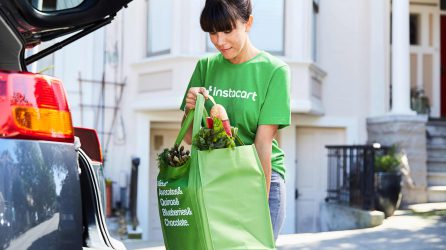MAP pricing for CPGs: How it works, why it’s important, and how to prevent violations

Presented by:
Stephanie Rubin — 2021
Pricing is at the sole discretion of the retailer.
No article about CPG pricing strategies can start without hammering home this simple fact: The retailer decides the price, period. As a manufacturer, you can have all the pricing policies you want, but at the end of the day you’re not the one setting the price.
This is such an important principle in US retail that, when I worked in CPG, it was literally part of my email signature. Every email I sent came with an asterisked disclaimer at the bottom informing the recipient that “all pricing, promotion, distribution, and shelving decisions are at the sole discretion of the retailer”. I know it’s the same for many others working across the industry.
Sensitivity around pricing is understandable and necessary. Price fixing is against the law, so CPGs have to be careful not to say or do anything that could be interpreted (or misinterpreted) as potentially problematic.
That’s not to say CPGs shouldn’t pay attention to what retailers do with pricing. Far from it. As the US online grocery market becomes increasingly competitive and consumers have more transparency on prices than ever before, it’s essential that CPGs monitor price movements so they know what’s happening in their market and category – and are able to respond swiftly and decisively.
The good news is, thanks to the latest digital shelf analytics, that process is much easier today than it was in the past. Here’s what you need to know.
MAP at a glance
While CPGs cannot set prices, they can suggest prices for the items they supply.
The manufacturer suggested retail price, or MSRP, specifies a suggested everyday price for an item. Some manufacturers also suggest minimum prices, specifying the absolute lowest price they would like to see an item on sale for once discounts, coupons, and other deals have been applied.
A widely used form of minimum price is the MAP, or minimum advertised price, which applies in situations where manufacturers provide cooperative advertising funds to a retailer. (Oftentimes, the term MAP is used as a catch-all for all manner of minimum pricing policies, but there are important differences.)
While the MSRP is generally public knowledge (it often features in press releases announcing new products, for instance), the MAP is proprietary business information and fiercely guarded.
From a CPG perspective, suggesting an MAP or other form of minimum price can be important for several reasons. Price is part of a brand’s equity. If you want consumers to see your brand as having a certain image and value, you need it to be sold at a price that reflects said image or value. Aggressive discounting and rock-bottom prices can cheapen a brand’s image and ultimately undermine its growth prospects.
Of course, the retailer is free to sell an item at whichever price they want – including one dramatically below the minimum or recommended price envisaged by the manufacturer. But CPGs also have options. As the FTC makes clear: “A dealer is free to set the retail price of the products it sells. A dealer can set the price at the MSRP or at a different price, as long as the dealer comes to that decision on its own. However, the manufacturer can decide not to use distributors that do not adhere to its MSRP.”
In reality, the nuclear option is rarely used. While pricing is highly sensitive and can lead to confrontational discussions, most CPGs monitor prices for less adversarial motives.
‘First mover recording’ is often a focus. This involves CPGs tracking and monitoring prices to understand which retailers are first to cut prices. Such monitoring is especially valuable during price wars, and can provide important data and insight that CPGs can use in joint business plan (JBP) discussions with retailers. If you have a strong joint business plan, you can approach MAP violations and other pricing issues in a less confrontational way.
How digital shelf analytics can help monitor MAP
Digital shelf analytics are key in this context as prices move so much more quickly today than they did even a few years ago. I still come across CPGs who read digital store circulars to monitor MAP, but this approach is becoming less and less viable.
With retailers using machine learning and dynamic pricing algorithms to optimize and match prices across websites and marketplaces, you risk being way behind the curve if you rely on manual price tracking.
Instead, automatic MAP monitoring using digital shelf analytics is quickly becoming the industry standard. This approach enables you to see at a glance all the places where a specific item is sold, and spot price changes as and when they happen.
At e.fundamentals, some of our clients are now having their prices checked up to six times a day, with email alerts being generated the moment any item anywhere dips below the MAP. That’s the level of granularity and responsiveness leading CPGs say they need to stay on top of pricing developments and hold their own in conversations with retailers.
The ability to visualize price movements is just as critical. Instead of spreadsheets full of datapoints, digital shelf analytics can present pricing information in a really simple and visual way. This, in turn, makes it easier for CPG teams to connect the dots and spot trends across different retailers and marketplaces.
Even for those without MAP policies there’s growing value in monitoring – and visualizing – the everyday and advertised prices of their brands.
As we come out of the Covid-19 pandemic, affordability is rising up the agenda for US consumers. A recent McKinsey study found that 45% of grocery shoppers plan to look for ways to save money, with 30% saying they intend to actively research for the best promotions.
In this cost-conscious climate, retailers will no doubt be jostling hard to lure shoppers with the best prices and deals. CPGs need to be ready to respond. Now more than ever, it pays to have a firm handle on price.
All the digital Shelf Analytics You Need to Succeed at Speed & Scale
See why world leading brands choose e.fundamentals for actionable digital shelf insights
Request A demoLatest Resources

CommerceIQ Launches Global Retail Ecommerce Management Platform Combining Sales, Supply Chain, Retail Media, and Digital Shelf with e.fundamentals Acquisition
Ecommerce platform enables consumer brands to grow market share profitably in today’s inflationary and supply-constrained environment through intelligent automation, supporting over 450 omnichannel retailers in 41 countries.

e.fundamentals becomes a CommerceIQ company
e.fundamentals has been acquired by CommerceIQ, the leading Retail Ecommerce Management Platform, headquartered in Palo Alto, California. Consumer brands can now harness one global software platform to power profitable market share growth across all major retailers.

5 strategic pricing opportunities CPGs should focus on now
As tensions run high between retailers and suppliers, CPGs need to be smarter than ever about strategic pricing. Here’s how to use digital shelf analytics to hold your own in tough negotiations.

What the smartest CPGs get right about selling on Instacart
This post has been updated and was originally published March 30, 2021. It's time CPGs get ready to win on Instacart. So read and learn: What's all the hype around…

5 optimization tactics to grow digital shelf sales
This post has been updated and was originally published May 14, 2020. Consumer goods companies (CPG) continue to grapple with enormous shifts to the industry as the eCommerce boom continues…

5 tactics to grow online sales for category managers
Category management has changed. We've highlighted the 5 tactics to help you scale your growth on the digital shelf at speed.
View Our Most Popular resources to help you learn and win on the digital shelf.

The Ultimate Guide to Content Management on the Digital Shelf

The Digital Shelf Cast - Listen to our latest episode





